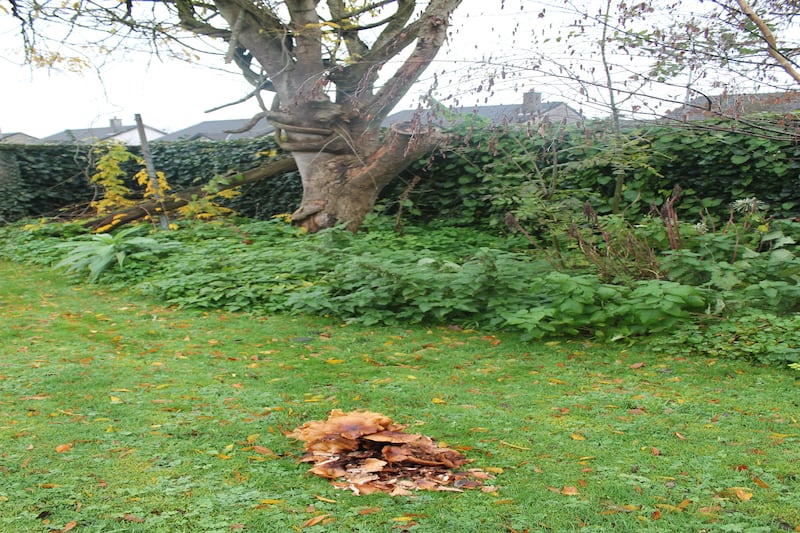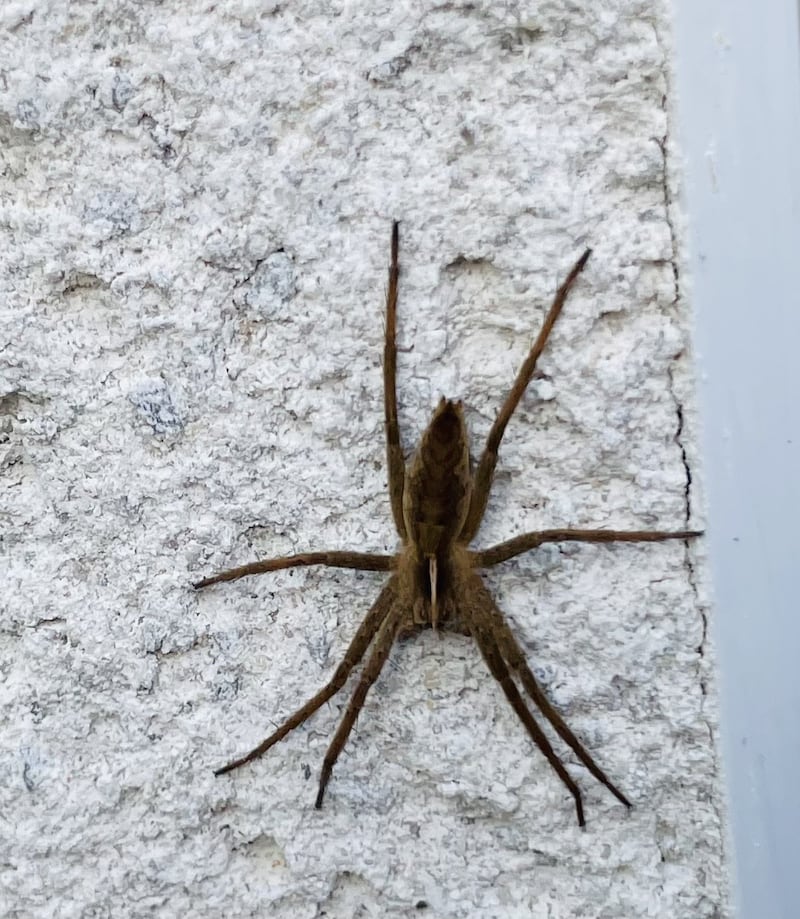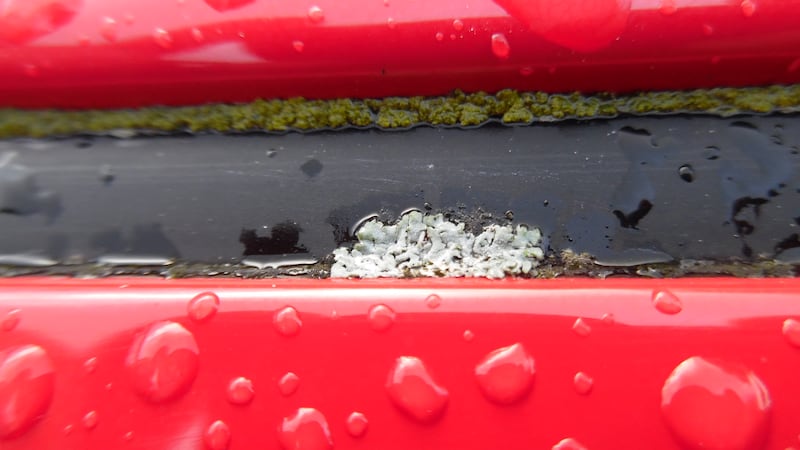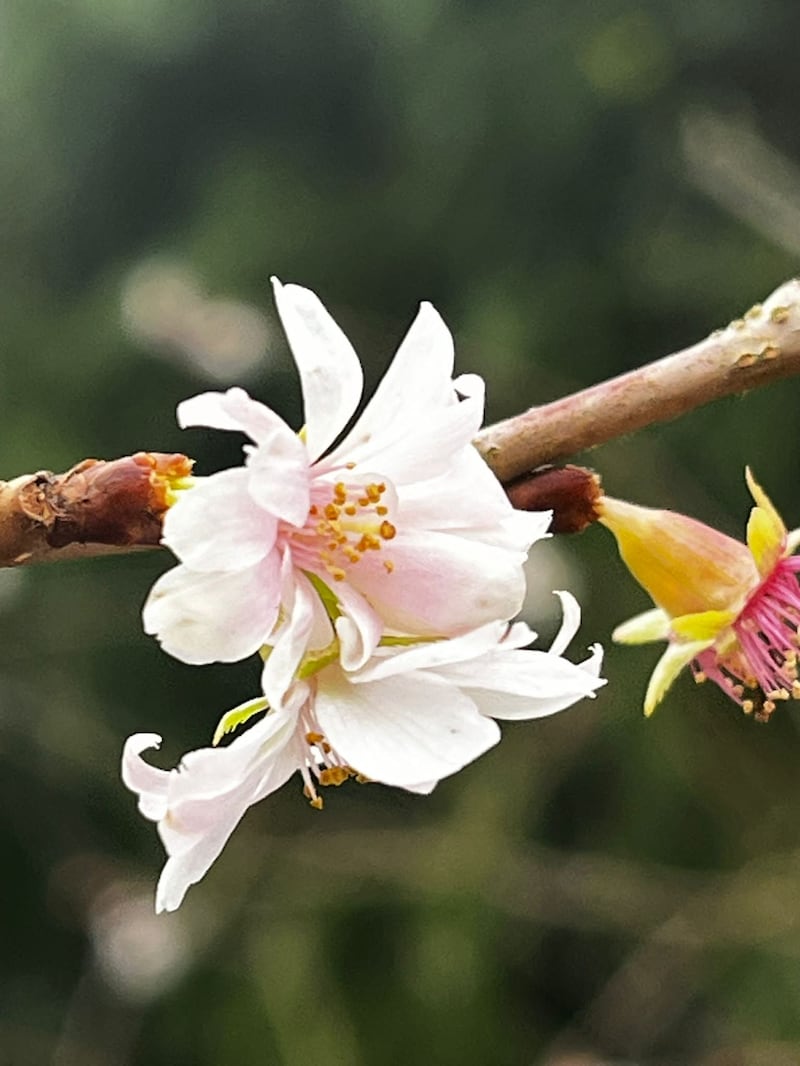I took this picture of a red kite against a blue winter sky in Newtownmountkennedy in December. Marty McDonald, Co Wicklow
Kites were reintroduced to Wicklow in 2007, having been made extinct in Ireland by the end of the 18th century. It is now established here and breeds successfully in woodlands around the east coast.

This cluster of mushrooms sprang up in our garden last autumn. Is it honey fungus? Two trees nearby died of it, an ash with a wisteria still entwined in the branches a couple of years ago and a young birch that recently seems to have just died. Cáit Ní Cheallacháin, Co Limerick
Yes, it is an ageing cluster of the honey fungus/bootlace fungus, Armillaria mellea. This group of mushrooms probably arises from bootlace-like rhizomorphs spreading in the soil from the nearby dead colonised tree hosts.
To settle a bet with my brother, could you tell us what this bird is? He says it’s a black-headed gull. Surely, it’s not. Or is there something wrong with this one? I see lots of them along the Grand Canal. Mick O’Toole, Clonsilla
I hope you have not bet the house on it, because your brother is right. This is a black-headed gull in winter plumage. It has a wonderful chocolate brown (not black) head in summer, which is its breeding plumage. This gull breeds away from the coast on bogs, marshes and islands on lakes. The dark feathers are reduced to just a dark spot behind the eye in winter, as your excellent photo shows.

I found this spider on the side of my house; what type is it? Jimmy Kealy
It is a hunting spider called the nursery web spider, Pisaura mirabilis, so called because the female guards the hatched young in large, tent-like nursery webs constructed on tall grass, for the first few days after they emerge from the egg sac. This is after she has carried round the unhatched egg sac for the durations. By now, however, all that work is done, and the spider can concentrate on stalking and grabbing prey as it hunts along the ground.

I have what looks like lichen growing on my 23-year-old car in several places. If so, does that qualify the car as a semi-environmentally friendly fossil fuel burner? Nigel Burgess, Dublin
You have indeed got lichen, as well as a line of green moss above the lichen. While mosses need some soil or humus particles in the groove to hold moisture for their rhizoid-type rootlets, lichen have no roots at all and get all their nourishment from the air and the rain. So, your car must be being kept where the air is clean and the rain pure. All very environmentally friendly as long as you don’t actually drive it.

My cherry blossom tree has been flowering for the month of December. It already flowered earlier in the year when the leaves were there. What is going on? T O’Brien, Dublin
Your tree is the winter-flowering cherry, a particular subtype of the flowering cherry Prunus subhirtella, which flowers twice a year. The flowering of plants is triggered by natural plant hormones, which in turn are triggered by day length. Cherries normally flower in spring. But a mutation in a cherry plant in Japan at the end of the 19th century affected the plant’s hormones and caused it to flower again in winter. Cuttings from this tree arrived in Europe in 1911. All the winter-flowering cherries here are cuttings derived from this original tree in Japan. Propagation must be by cuttings. The seeds do not breed true.
Please submit your nature query, observation, or photo with a location, via irishtimes.com/eyeonnature






















